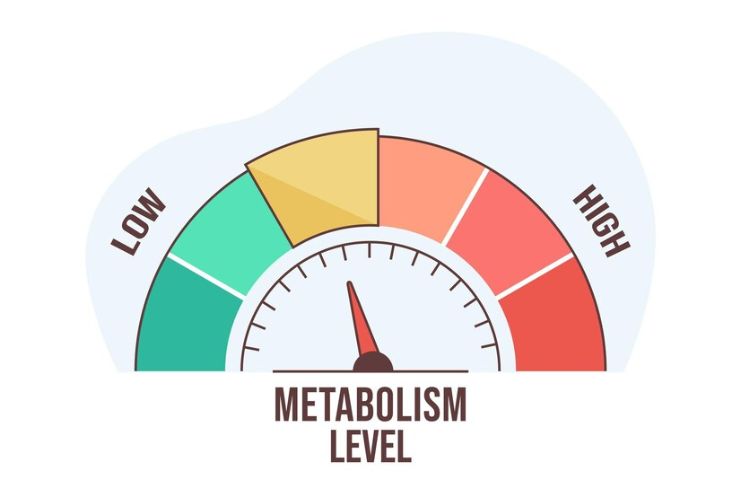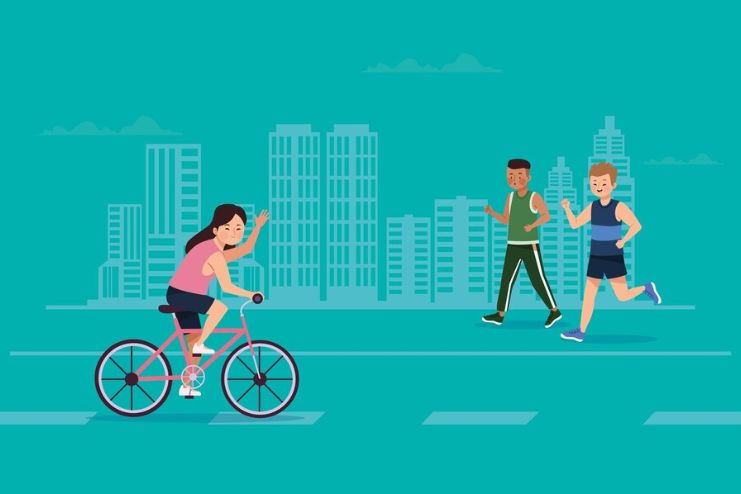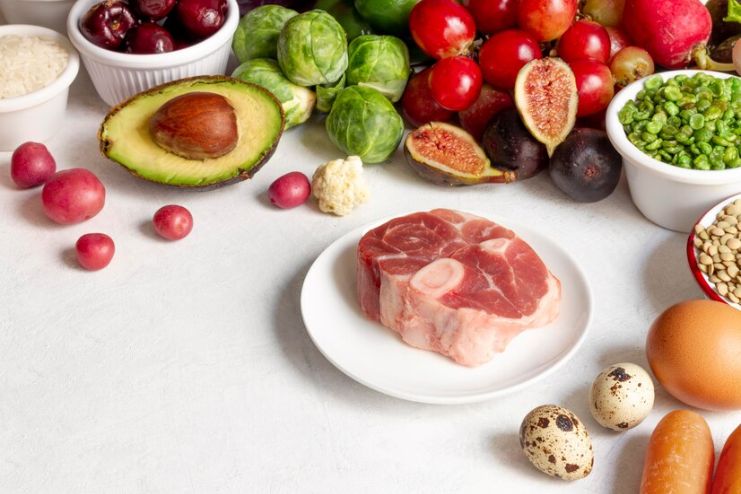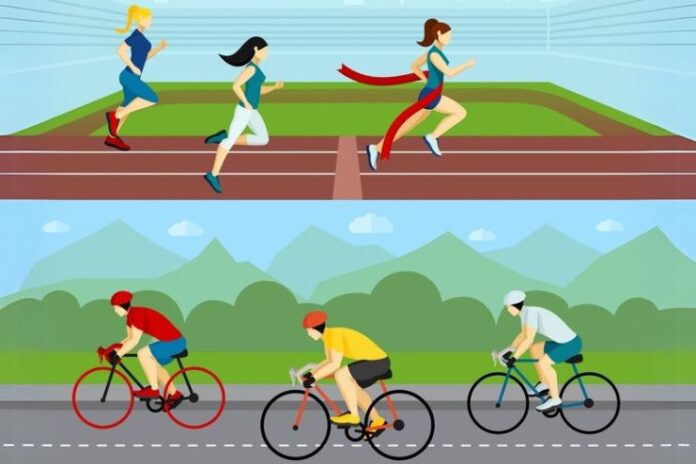Affiliate Disclaimer
Some links in this article are affiliate links. We may earn a small commission if you make a purchase through these links, at no extra cost to you. We only recommend products we find useful to our readersAre you torn between cycling and running as your go-to workout? Both burn calories, yet you must choose the one that suits your fitness needs and goals better. Which one to choose? Read ahead to get clarity.
Cardiovascular exercises such as cycling and running are the most preferred options for burning calories. These not only have significant calorie-burning potential but also benefit our overall health. Burning calories is crucial, and it is estimated that general exercise, on average, burns between 200 and 400 calories in 30 minutes, depending on intensity and body weight.
According to Harvard Medical School, a 155-pound person burns about 372 calories cycling at a moderate pace for 30 minutes and approximately 298 calories running at a six mph pace for the same duration. A heavier person may burn more. However, the numbers vary based on exercise intensity, terrain, and personal metabolism. Understanding their calorie-burning potential helps us include them in our fitness regimen to varying degrees.
Read more: Building Endurance: Daily Running Challenges for Beginners
Understanding How Calorie Burning Works

It is crucial to understand the factors affecting the calorie expenditure in cycling compared to running.
Here are a few factors affecting calorie expenditure:
- Weight and Body Composition: Heavier people need more energy to perform any activity, so they burn more calories than lean individuals.
- Exercise Intensity and Duration: The intensity and duration of exercise are crucial to understanding calorie expenditure. High-intensity efforts (like sprinting or uphill cycling) burn calories faster than low-intensity, steady-state cardio.
- Terrain and Environment: Running on uneven or uphill terrain increases your calorie expenditure. Likewise, cycling against the wind requires more energy.
- Metabolism: Individual metabolism plays a major role in calorie burn. Age, gender, and fitness level influence how efficiently your body burns calories during exercise.
Calorie Burn Comparison: Cycling vs. Running
We need to compare both activities to understand which burns the most calories, cycling or running. Though cycling and running are known to burn calories and improve fitness, they achieve results differently. By examining the calorie-burning potential of each, you can make a more informed decision about which activity aligns with your goals.
Here’s the comparison:
Running:
- Calorie Burn: As mentioned above, a 155-pound individual burns about 372 calories per 30 minutes running at six mph. Running faster helps burn calories quickly and efficiently. Faster running increases calorie expenditure and improves the afterburn effect (EPOC). In this stage, the body continues to burn calories at a higher rate, even post-run. Moreover, running faster improves cardiovascular strength and builds stronger muscles, particularly in the legs and core, essential for sustained high-intensity efforts.
- Intensity Matters: High-intensity workouts, including sprinting or running uphill, help increase muscle group activation. Sprinting or running uphill activates more muscle groups and burns more calories than jogging on a flat surface. It activates fast-twitch muscle fibers, an essential aspect for explosive movements, and consumes more energy in a shorter duration. These high-intensity efforts also increase heart rate and improve aerobic capacity. This ultimately makes the body more efficient and uses more oxygen.
- Terrain Impact: Running on trails or hills can increase calorie burn by up to 10% compared to flat roads. Trails also require maximum focus and coordination to navigate uneven surfaces, activating smaller, often underused muscles. The constant adjustment to changes in terrain can improve balance and make you an efficient runner. It also reduces repetitive impact on joints compared to hard pavements, potentially reducing the risk of injuries.
Read more: 5 Running Gear Essentials: Must have Items in Runner’s Arsenal
Cycling:
- Calorie Burn: Cycling at a moderate pace (12-14 mph) for 30 minutes burns about 298 calories for a 155-pound person, with variations based on terrain and resistance, as research on outdoor cycling dynamics suggested. Faster speeds or uphill cycling can double the calorie expenditure. Uphill cycling primarily engages larger muscle groups, including the quadriceps and glutes.
- Resistance Influence: Using a stationary bike with higher resistance settings or outdoor incline cycling leads to more significant calorie burn. This extra effort makes muscles stronger. Outdoor cycling on steep inclines is similar to resistance training, as the body must overcome gravity. Including interval training by alternating between low and high resistance can burn more calories.
- Environmental Factors: Wind resistance plays a significant role in outdoor cycling, increasing energy demands. Riding against wind can boost calorie burn as the body exerts more pressure. Environmental factors like road surface and temperature also play a significant role in burning calories. Rough terrain or extreme temperatures further expend energy while outdoors.
Factors Affecting Calorie Burning in Both Activities
If you wish to make the most of your workouts, it is essential to understand the reasons behind calorie burning. Both cycling and running have distinct factors that influence their efficiency. These can be individual fitness levels or environmental conditions. By understanding these variables, you can customize your routine accordingly.
An exercise routine that maximizes calorie burn and aligns with your fitness goals is a perfect choice. Let us understand how factors affect calorie burning in cycling and running.
- Fitness Level: If you are new to fitness, it takes more energy for the body to adapt. That is why beginners expend more energy while seasoned professionals burn fewer calories for the same task.
- Duration vs. Intensity: Opting for high-intensity shorter sessions burns more calories than longer moderate sessions.
- Heart Rate Zones: You burn calories based on the intensity of your workout and your heart rate zone. Exercising at 70-85% of your maximum heart rate promotes fat and calorie burn. Check out our detailed article on how to use your heart rate zones to optimize your workout.
- Afterburn Effect (EPOC): High-intensity running often induces a stronger Excess Post-Exercise Oxygen Consumption (EPOC) than cycling, leading to additional calorie burn after the workout.
Choosing Based on Goals and Preferences

Cycling vs. running can create confusion. However, you must align your choice with your personal fitness objectives and lifestyle choices. Each activity offers different advantages, ranging from calorie-burning potential to muscle engagement and joint impact. You can make an infrared choice by understanding how these factors fit into your routine and align with your fitness goals.
- Weight Loss Goals:
- Cycling: Cycling burns a few calories less than running but is more sustainable for longer periods. This is ideal for individuals looking to spend longer durations on workouts.
- Running: Running is easy and can be done anywhere. While running burns more calories per minute, it can be harder on the joints. Read our article on how to breathe while running
2. Muscle Engagement:
- Cycling: Cycling typically targets the quads, hamstrings, and calves, in short, the lower body muscles.
- Running improves cardiovascular endurance, engages the whole body, and helps build core strength. People who wish to achieve these results can choose
3. Joint Impact:
- Cycling: A low-impact exercise, cycling is suitable for people with joint pain or those recovering from injuries.
- Running: Running might be weight-bearing and bone-strengthening, but it can harm joints improperly or excessively.
4. Accessibility and Convenience:
- Cycling: You need a bike that is still versatile (stationary, road, or mountain biking).
- Running requires minimal equipment—just a good pair of shoes, and you’re good to go.
Tips to Maximize Calorie Burn

Burning calories isn’t a challenge when done right. All you need to put in is intentional effort. Whether you choose cycling, running, or both, little tweaks in your routine can significantly boost the results. Including high-intensity intervals and focusing on nutrition, a few tips mentioned below will help you get the most out of your workout.
- Incorporate Interval Training: To keep your heart rate increased, you can alternate between high and low intensity. For example, you can cycle or run at maximum effort for 30 seconds and follow it up with a 1-2 minute recovery period. Interval training not only improves heart fitness but also adds endurance, power, and speed over time. It’s an effective way to increase workout intensity, making it ideal for those with busy schedules.
- Mix Activities: Choose a variety of activities and mix them up to engage different muscle groups. This avoids monotony and helps target various muscles in the body for a thorough workout. For example, try to combine activities like running, cycling, and strength training exercises. This ensures that both the upper and lower body muscles are worked while improving overall fitness.
Various mixed exercises also reduce the risk of overuse injuries by distributing the workload across different muscle groups.
- Use Proper Form: Opt for proper form while running or cycling. Good posture helps prevent workout-related injuries. Maintaining a straight posture while running ensures efficient breathing and less strain on the lower back and knees.
When cycling, have a straight back, relaxed shoulders, and slightly bent elbows. This is a perfect posture for a comfortable ride. Proper form also improves efficiency and allows you to save energy and aim for a better performance.
- Prioritize Nutrition: Do not forget to focus on nutrition. Pair workouts with a balanced diet rich in lean proteins, healthy fats, and complex carbs to support weight loss and energy. Here is the list of 12 foods to eat after running.
Conclusion: The Verdict
Cycling and running have distinct pros and cons. Aligning both activities in your workout routine helps you achieve results faster. While running has a more significant calorie burn per minute, cycling is less harmful to the joints, allowing longer workout sessions. Depending on your fitness needs, time, and desired results, you can opt for any one or both activities.
All in all, you must enjoy the activity, either cycling or running, and maintaining consistency while including both exercises in your regimen is a good way to add variety. Remember to start small, track your progress, and align your fitness goals practically to get the best results!
References
- https://www.healthline.com/health/fitness-exercise/afterburn-effect-workouts
- https://www.webmd.com/heart-disease/understanding-heart-disease-symptoms
- https://www.webmd.com/heart-disease/heart-failure/watching-rate-monitor
- https://www.health.harvard.edu/diet-and-weight-loss/calories-burned-in-30-minutes-of-leisure-and-routine-activities
- https://www.medicalnewstoday.com/articles/what-exercise-burns-the-most-calories#swimming
- https://www.healthline.com/nutrition/walking-on-incline
- https://www.sunmono.com.au/blog/burning-calories-bike-riding
In this Article




















